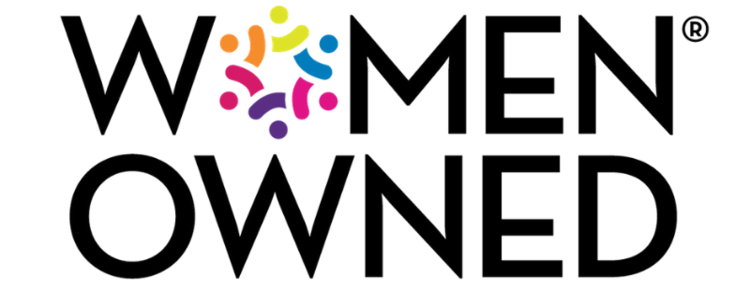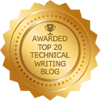Popular expectations for “good” writing by scientists tend to be clear-cut and limited to the expository. I learned this the hard way, via my very first research report. My florid analysis returned to me deeply lined in red, topped off with a tart admonition from my mentor against “gilding the lily.” Stick to facts, I learned. Support conclusions with data and weigh the words in your conclusions carefully. Take a third-person, neutral tone that borders on anonymity. Skip the editorial; it’s not a grant application. In my later forays into scientific writing, I saw this advice modeled in the countless peer-reviewed journals and conference proceedings I read. It put me in good stead to write several of my own papers for journals and the 250+ page doorstop that earned me a graduate degree. I blithely assumed that these conformist (but, let’s be honest, dry-as-sawdust) works would achieve their purpose for the scores of nameless readers I imagined existed “in the ether” beyond my peer reviewers and thesis committee. In retrospect, I would have done well to considered the needs of those readers (my mother included) a bit more carefully.
In my first job, I quickly learned that the writing characteristics valued in higher education, while suitable for their own end, are not necessarily helpful for successful transition of an academic writer into employment in industry. Crisp executive summaries, taut technical marketing pieces, and daintily parsed language in the prologue of a financial filing take a different kind of finesse, I learned. These are all fact-based, of course, but they all also benefit from appeal and persuasion directed at the reader. Engaging and effective words, whether in the academic or industrial world, should provide points of connection for reader (our customers) and should be coherent and compelling, no matter the technical purpose of the document.
It is ironic, then, that an unusual personal academic experience has so far provided the most profound influence on the customer focus of my business writing. The oasis in the midst of a dry, unyielding season in my PhD program came in the form of a National Science Foundation grant to Rutgers University (http://www.gk12.org/). In the GK-12 program, I spent two days a week in local middle school, delivering science lessons in Earth Science and Life Science over a full school year. Behind the scenes, I spent countless additional hours preparing the lessons and written collateral in fulfillment of the New Jersey curricular standards. The quality of the writing was especially important because the children did not work from printed science textbooks. Some early experiences in the classroom quickly taught me that the ‘tween (age 10-12) demographic is indeed more challenging than most others to impress. My studied attempt to be “cool” did not forge the gap that existed with the students’ perceptions of content relevance. Our first lesson, on taxonomic classification of trees, fell flat even with the benefit of the diversion of a walk outdoors to collect specimens. After a similarly painful discourse on minerals (Did I wear my lack of care for geology on my face?), I learned that the technical content had to address three key things to be successful:
- What does this have to do with me? Is it relatable or interesting?
- Why does this matter? How it relevant?
- What do I do with this information? Can someone use this? Will they want to?
Quite simply, I had not given my customers any reason to care about leaves, or about igneous rocks. Although an inauspicious beginning, the children’s energy was just the antidote I needed at a particularly frustrating phase of my research program, so I felt I owed them something better. Several weeks into the school year, a more successful Life Science lesson showed the customer focus of my writing had improved. The lesson narrative laid out the processes of DNA transcription and RNA translation via an age-appropriate metaphor of “passing secret notes.” The next day, a group of seventh grade girls brought me a sweet, rather lengthy, missive they had painstakingly composed in encrypted “codon” language we had covered in the lesson. This evidence of reader engagement with the topic was even more satisfying validation to me than an acceptance letter I would receive, years later, from the editor of the Biophysical Journal for my first manuscript.
I continue to take the customer perspective very much to heart as I write, even years later. The same tenets have held true as I have drafted white papers, prepared product training materials for a non-technical sales team, honed advertising copy for a trade magazine, written public comments to government regulatory dockets, and composed the front matter for an SEC Form 10-K. The tone and tactics I use in these diverse written pieces vary, of course. However, in revisions, I always return to the same questions: Have I helped the reader identify with this content, and have I conveyed the message as both important and actionable? The amount of effort I invest in making written pieces helpful and compelling is the same, whether a research summary intended for a company vice president to evaluate for further funding or a laboratory standard method for a junior technician to follow. The same question applies: Will reading what I have written have been a worthwhile use of the reader’s time?
The best way to improve customer focused communication any more than incrementally is via feedback from the readers themselves. When possible and practical, solicit your readers for input and suggestions. Do not accept that internal documents may be taken granted, or that it is unjustified to hone communications that “never leave the premises.”
Ask specifically:
- Did you find the answer you were looking for in the Standard Operating Procedure to which I referred you and was it easy to understand?
- Did the project progress report I wrote provide enough information to inform a decision on the project’s continuation?
- How complete were the meeting minutes I circulated and were they clear enough on our next steps?
Kristine Lukasik leads Corporate Regulatory Affairs for Balchem Corporation, a provider of technologies for the food, feed and specialty chemicals industries. Her experience in translational science communication extends from the laboratory environment and technical marketing authorship to the world of policy. Despite firm roots in science, she remains an avid reader in all genres. She is guilty-as-charged for frequent indulgence in “fifty-cent words.”
She’s based in metro New York City, in the Hudson Valley.


